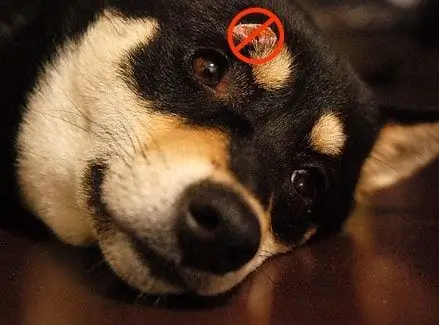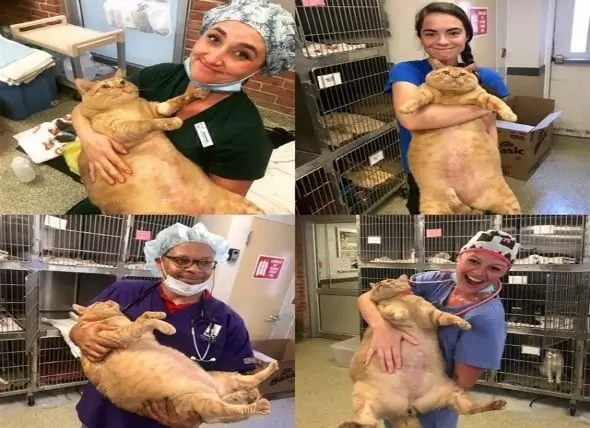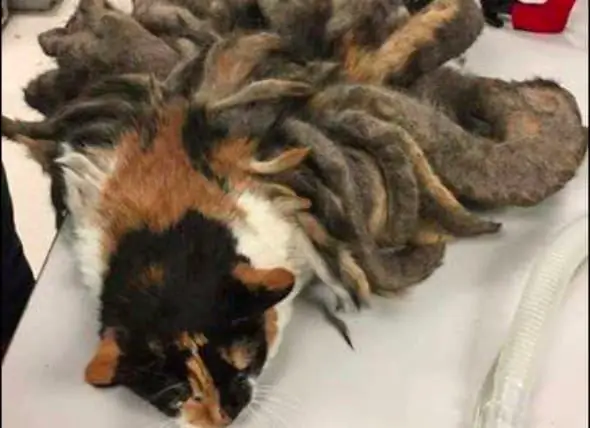
- Autora Daisy Haig [email protected].
- Public 2023-12-17 03:06.
- Última modificació 2025-01-24 12:35.
Els dos meus bulldogs francesos han patit uns tumors desagradables, sovint amb pruïja i tècnicament benignes que anomenem histiocitomes. Tot i que els histiocitomes solen resoldre al cap de dos o tres mesos, la incertesa de la procedència d’aquest tumor fa que la majoria dels veterinaris la retiri (o almenys una part) per garantir-ne la benignitat.
Un bisturí quirúrgic d’una massa “benigna” us pot semblar extrem, però atès que els histiocitomes poden ser molestos i aterridors, sovint s’indica la cirurgia.
Molest: perquè sovint apareixen al cap i als peus, llocs on es pot ratllar o llepar fàcilment una massa ulcerada i perfectament rodona.
Atemoridor: perquè és difícil saber si el que acaba d’aparèixer a la pell del vostre gos (i sol passar ràpidament) és un desagradable tumor de cèl·lules mastòfiques (o alguna altra massa de monstre d’aquest tipus) … o el seu cosí més fàcil, histiocitoma.
Atemoridor: perquè és difícil saber si el que acaba d’aparèixer a la pell del vostre gos (i sol passar ràpidament) és un desagradable tumor de cèl·lules mastòfiques (o alguna altra massa de monstre d’aquest tipus) … o el seu cosí més fàcil, histiocitoma.
while young dogs (under three years of age) are more likely to get these, they can happen to dogs of any age. indeed, my older frenchie, sophie sue got one about a year ago. she was nine-not exactly a spring chicken. vincent has had three. and he’s not yet two years old.
some breeds are more predisposed. labrador retrievers and boxers, for example. though frenchies aren’t on the list, perhaps they should be… (perhaps they should be on the list for almost everything if my recent round of healthcare scares is any guide.)
ugly and prominently placed as they typically are, most owners want histiocytomas removed. some vets, however, will counsel owners to either wait a few weeks (especially if the dog is young and statistically less likely to be suffering from a malignant mass) or to have a simple section of it snipped (with a local anesthetic) for histopathological analysis at the pathology lab.
other vets will even take a needle poke at it, though most pathologists find that histiocytomas are not easily disgnosed definitively through this method (cytology).
if the dog is older or the mass is especially annoying to the dog or owner, however, we remove the whole sucker and clean up the mess quickly. unfortunately, though, this approach is more costly and usually requires general anesthesia. it’s nonetheless the approach i take for more than half of these tumors…better to be safe than sorry, right?
still, most owners need to know they have a choice. the nervous nellies among you (like me) are less likely to want to stare at a mass for a couple of months to see if it simply goes away. the rational or more anesthetically cautious, however, are justified in waiting-as long as their dog is young and/or hasn’t suffered from malignant masses in the past.
whatever choice you make, consider histiocytomas an excellent foray into the world of skin tumors. it’s like a warm-up for what’s likely to come as your dog ages. and it’s not all bad. look on the bright side: curing cancer is sometimes just a scalpel slice away.
Recomanat:
Un Gat Polidàctil Grassonet Que Busca Casa Es Converteix En Una Sensació Viral

Un gat polidàctil fa un xoc a Internet amb la seva peculiar personalitat i la seva llista d’exigències molt específiques
Symba El "gat Gros": De La Sensació Viral A La Mascota Adoptada Amb Objectius De Pèrdua De Pes

Quan un gat de 35 lliures anomenat Symba va arribar a la Humanity Rescue Alliance de Washington, D.C., el personal no es podia creure els seus ulls. Symba va ser adoptada ràpidament per una família local que es compromet a ajudar-lo a perdre pes
Un Gat Rescatat Amb Pell De Mal Estat Té Un Nou Aspecte I Una Nova Llar

En una història que serveix de recordatori per vigilar les persones grans i les seves mascotes: a mitjan desembre es va trobar un gat mal enredat a la seva residència de Pennsilvània després que el seu amo fos ubicat en una residència de gent gran
Per Als Bonys Amb Aspecte Inofensiu, Vigileu I Espereu, Però No Massa

El bony semblava prou inofensiu, amb una inflor vermella una mica a l’interior de l’orella de Brody, no més gran que un tic-tac. De vegades se li apareixen petites protuberàncies vermelles, ja sigui per esgarrapar-se les orelles, per un traumatisme o per qui sap a quina altra cosa els agrada entrar als gossos. Vaig a vigilar-lo, vaig dir. Vaig esperar un mes perquè marxés, però no. No es va fer més gran, però tampoc es va fer més petit. Per tant, em vaig trobar amb una decisió: passar per les despeses d’un aspirant i arrossegar el meu gos per una cosa tan menor
Tallar, Tallar I Tallar Biopsis De L'histiocitoma Benigne

Dos dels meus darrers quatre gossos han patit tumors cutanis desagradables i tècnicament benignes que anomenem histiocitomes. Tot i que els histiocitomes normalment es resolen al cap de dos o tres mesos (o menys), la incertesa de la procedència d’aquest tumor fa que la majoria dels veterinaris el tallin (o almenys una part) per tal que tothom pugui dormir tranquil·lament a la nit, sabent que no s’amaga cap mal
